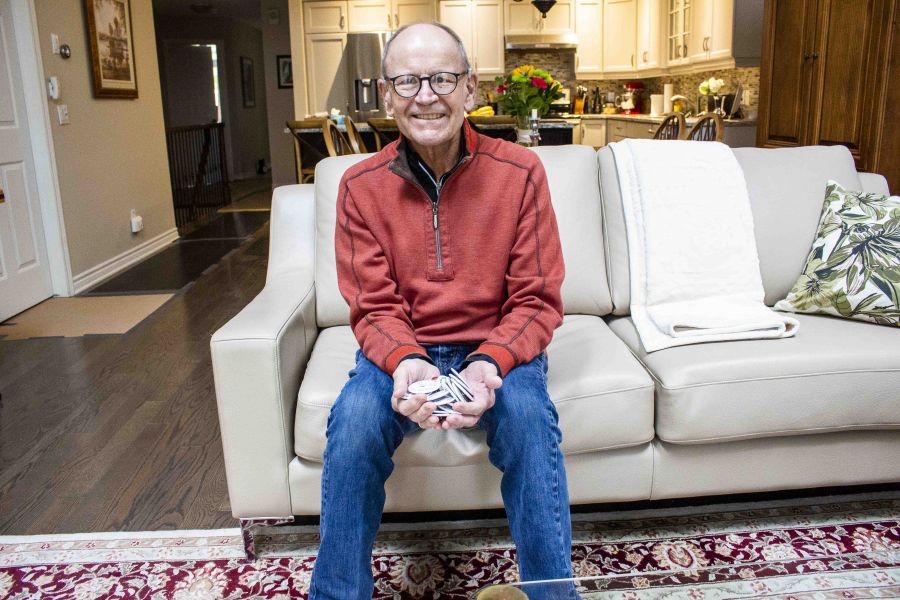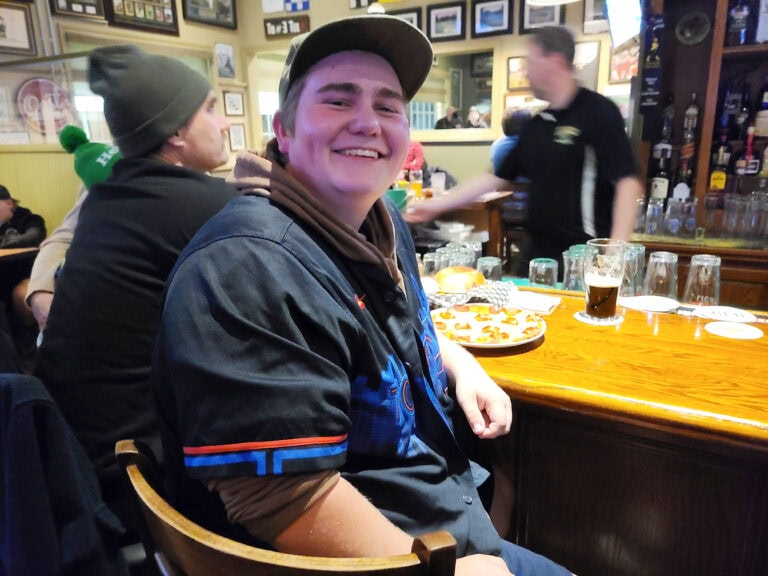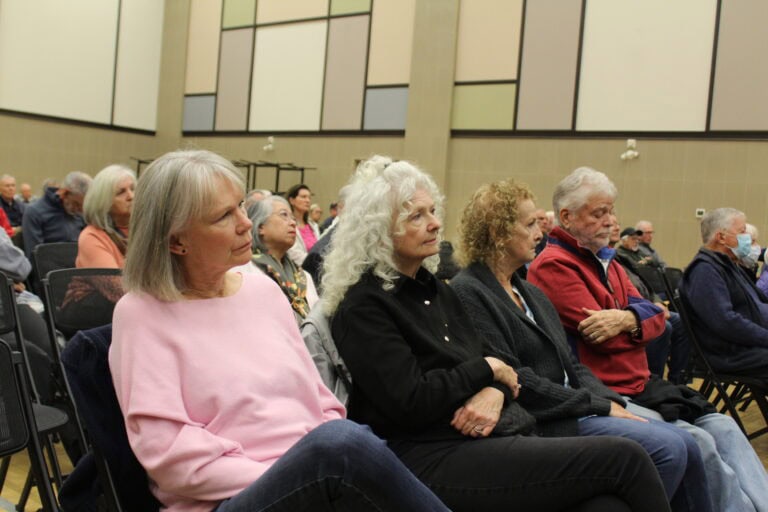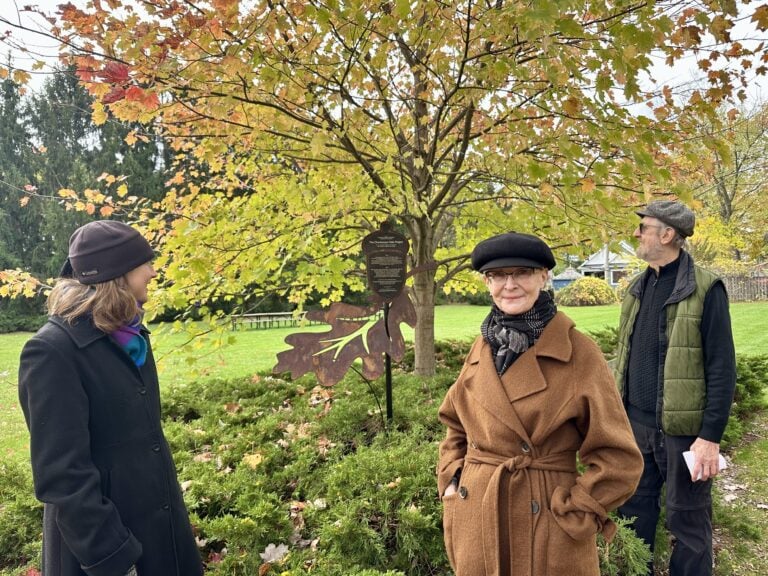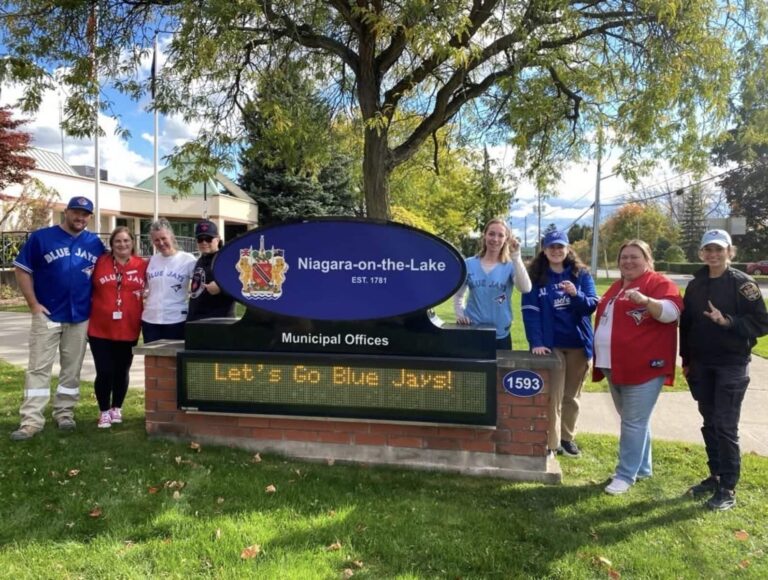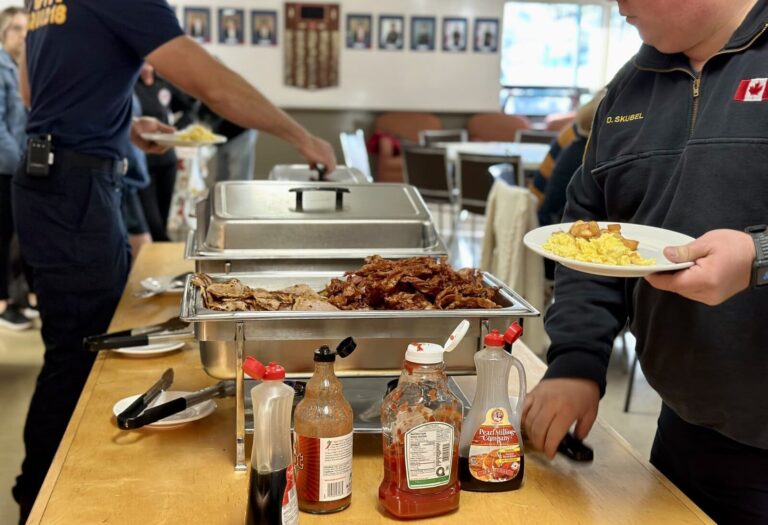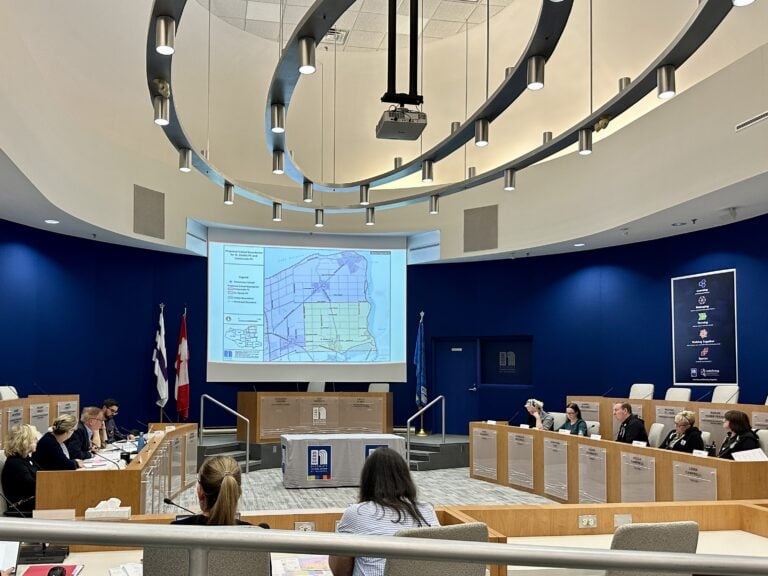Still fighting pancreatic cancer, longtime volunteer sings praises of his adopted community
Santa Claus hits the streets of NOTL this weekend for a COVID-friendly drive-by parade, visiting all five of the town's communities.
And it will be one of the rare times in almost two decades that Bob Cheriton won't be out patrolling the route.
If you've watched a Niagara-on-the-Lake Christmas parade in the past 19 years, or ever bought one of the parade buttons, Cheriton played a role in making it all happen.
The 72-year-old, who has retired from the Christmas parade committee, recalls many good times over the years and how it all came to be.
Cheriton moved to Niagara-on-the-Lake in 2001 after retiring from a long telecommunications career at Bell.
He says a “big factor” in him moving to NOTL was that his longtime friend, the late Bruce Pospiech, lived here. The pair met in 1966 in engineering school at Carleton University.
Pospiech was involved with the Christmas parade, so Cheriton volunteered time to help him organize the parade's traditional button campaign.
“We became fast friends and that friendship endured over the years. We followed their kids growing up, they followed our kids growing up. He spent all of his life down here, I spent my life travelling all over the place.”
Cheriton fondly remembers how he got started helping Pospiech with the parade.
“In 2001, around about the time we were taking possession of our first home, I wandered into his farmhouse. And he had the kitchen table all spread out with buttons and charts and maps of the parade and all this stuff, grumbling away. And I said, the magic words, 'Can I help.' Well, all that does, especially in a town that thrives on volunteerism like Niagara-on-the-Lake does, that sets the hook and you're done. You're in at that point, and there's not a darn you can do about it. So I became the button guy.”
In those days, the buttons were more of a memento or souvenir of the parade.
“We sold them through little baskets and retail establishments and stuff. And we didn't make any money doing it, but we did it anyways, and we had a lot of fun,” Cheriton says.
Over the years, he gradually became more involved in the parade and when the committee's former media person retired, he took over as the spokesperson.
“Good or bad, I became a bit of the public face of the parade for the following number of years,” Cheriton says.
The buttons were taken over by John Strecker, who Cheriton says figured out how to make them a profitable fundraiser for the parade. Now, the buttons raise about $4,000 each year, Cheriton says.
In a normal year, through community donations, the parade raises about $20,000, which helps to pay some of the marching bands.
“The rest is donations from a number of our businesses and private citizen donations and so on. Some people have been donating for as long as I've been associated with the parade and longer.”
One of the struggles along the way was trying to figure out when the parade first started. One year, Pospiech and Cheriton figured it had to be at least the parade's 40th anniversary, so they started digging through old newspaper articles to see if they could find out.
“My wife (Rosalie) got involved in that as well. She was over at the library researching it and going through some of the old Advances from way back when and this kind of stuff. Well, we never did finally figure it out … it's kind of like trying to pin down with absolute precision when the Niagara-on-the-Lake Golf Club was first started,” he says.
“You can get within a reasonable range, but you can't get the exact date. But at some particular point, we encountered an advertisement for the parade in one of the papers in the microfiche, and that got us really close to the 40-year mark. So Bruce said, 'Well, we're going to put a stake in the ground.' And that was 40 years. And then we've been counting up ever since.”
This year would have marked over 50 years.
“I do remember from that time I was so impressed with some of the people who worked in the parade and their commitment to the parade and that's probably one of the things that sticks with me the longest, and Bruce was the first example of that. He was a very dear friend, and then Darka Jensen, who also works over at the town, has been involved in the parade for as long as I can remember and she does so many different things.”
“Bruce was incredible. He put 30 years, 30 parades under his belt.”
“The commitment of the volunteers is one of the things that over my time really strikes me as just quite awesome, to see what they've accomplished and they do it year after year after year after year. It's really kind of special.”
In all of his time helping out, Cheriton has never watched the full parade from Queen Street. Instead, spending time as parade marshal, he's watched from angles others don't get to see. One of his favourite aspects is watching the marching bands set up by the old Parliament Oak school.
“When the full band comes out and the precision and the skill that they have, if that doesn't send shivers up your spine, I don't know what the heck does. It's absolutely stunning,” he says.
The only year he missed the parade was in 2016, after he was diagnosed with pancreatic cancer. He was scheduled to fly to Germany for an experimental treatment a couple of days after the parade, and friends and family told him being in a large crowd wasn't a good idea, in case he got sick.
Even in a pre-COVID world, “everybody and their cousin was lecturing me about how it would be totally irresponsible for me to go out on a parade and be exposed to all of these people with their potential germs and all this stuff,” Cheriton says.
That year he watched the parade from home through the Queen Street cam above Sotheby's.
He recalls what it was like to first get the cancer diagnosis.
“It was really like you ran into a wall. I mean, bang, you get a cancer diagnosis, and you weren't really feeling all that bad.”
The scariest part was hearing the survival rates from the pancreatic specialist.
“And he started rhyming off statistics. You know, there's an 80 per cent chance you'll be dead in a year, if you aren't dead within the year, you'll probably be dead in the second year. And there's only a one or 2 per cent survival rate beyond five years. Blah, blah, blah, blah, blah, blah, blah. So that wasn't exactly the best day on the planet,” Cheriton says.
When he got home and did his own research, “sure enough, the statistics were pretty grim.”
So he kept on looking further and eventually came across a procedure that piqued his interest.
“I was astonished when I was doing the research how much extraordinary research is being done, broad spectrum, across all types of cancer around the world. It was stunning to me how much and how creative some of these people were.”
He also learned the course of treatment for pancreatic cancer had not changed much in about a dozen years.
And survival rates had not moved appreciably either. So, I kept digging and digging and digging, and I came across a procedure called an IRE, which means irreversible electroporation, which intrigued me.”
“It involves taking electrodes and putting them around a cancer tumour and then running this super high voltage and thousands of volts between these two things,” he says. The procedure disrupts “the surface of the cancer cell so that its ability to hide itself from the body's immune system is messed around with a little bit.”
Further research put Cheriton in touch with a doctor who told him if he could get the treatment, “it presented a legitimate opportunity to prolong my life.”
The next step was an Air Canada ticket to Germany.
“I had made contact with a surgeon in Germany up in the Baltics, a place called Stralsund,” Cheriton says,
Through a Canadian mayor who also had the surgery, and was vocal in saying it should be available in Canada, Cheriton connected with a surgeon in Stralsund, Germany.
“And so just shortly after the parade in '16, I flew over with my wife and we went up to Stralsund and I had the procedure done.”
He was stable for a while afterward, but the cancer flared up again and he's been on chemotherapy ever since.
“I do chemo now, three weeks out of four, pretty much 52 weeks of the year. And I've managed to stay ahead of it with the help of some incredibly talented people for over four years now.”
He says now the treatment has become part of his life.
“It is the normal for me now, and it is the normal for my family. And I have enjoyed tremendous support from the community, whether it's all the guys at the golf club, or people in hydro” (where he is a longtime board member).
“Can I pretend life is perfectly normal? No, of course not. Is it a pretty good quality of life under the circumstances? You betcha it is.”
He says he's “been pretty fortunate,” but at the same time has tried to simplify life a little bit.
“I stepped back a bit from some things that I've been involved with over time. I used to be on the board of a company called Niagara Regional Broadband Network, a fibre optic network company that the town of Niagara-on-the-Lake owns 25 per cent of. Fantastic company. Boy, if you like working with techies, those are a great bunch of guys,' he says.
And now he has stepped back from the parade to give himself more time to focus on family.
With COVID he's also stopped going to the community centre gym because of his compromised immune system. However, a saving grace for him during COVID, he says, has been the NOTL Golf Club.
“The tonic this year was John Wiens' golf club. I still remember the first day, it was a beautiful sunny day and the golf course is in magnificent shape because Mike Magwood and the boys over there had lots of time to get it in pristine shape 'cause it opened late this year,” he says.
“I don't remember how I played and I don't particularly care. It was such a liberating experience to get out.”
He says he thinks life “serves up things in a funny way.”
“I'm amazingly struck about the important role of volunteerism in this community,” Cheriton says.
“I was nomadic. So I never felt like I had really good community roots. And I was kind of looking for a way to get involved in the community when I retired from the workday work, and I found it here,” he says.
Whether it's organizations like the Virgil Business Association or the multitude of service clubs doing good things for the community, “These are all volunteers who are committing their time and their energy to make this town better. And to run these events — Candlelight Strolls, Christmas parades, all the stuff that we do in this town — we owe this to volunteers. It's amazing. And this town has such a pool of talent.”
Even with the Christmas parade, volunteers have also relied on that pool of talent, such as years when artist Trisha Romance designed the parade buttons.
“We asked Trisha Romance whether she'd do that. I asked on a Friday and by Monday I had five designs,” Cheriton says.
He says as you get older, keeping the mind active is important and a lot of people volunteer to do just that.
“You don't want to shut the grey matter down.”
Cheriton is keeping his spirits high, despite the challenges of living with cancer.
After his diagnosis, “most of the people close to me thought I was pretty much toast. And then I lost Bruce Pospiech,” Cheriton says.
But he keeps looking forward.
“I didn't know whether I'd ever see the sunny side of 72 so I figured, 'Well, OK, let's go for 75 now and if we get that let's see what we can do with that.”
“And I know the probability is I die of pancreatic cancer, a very high probability I will. When? Not today is my answer to that question.”



